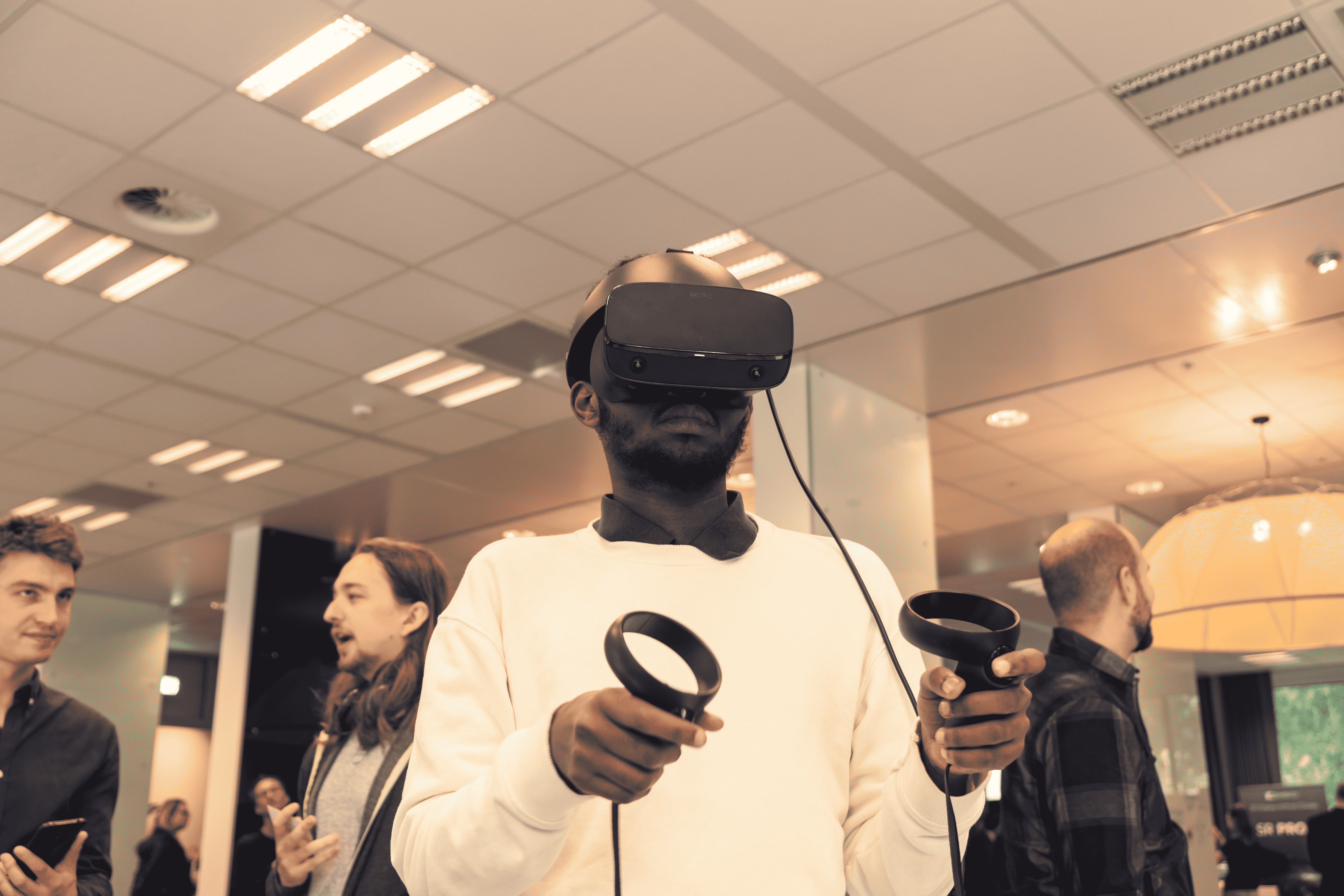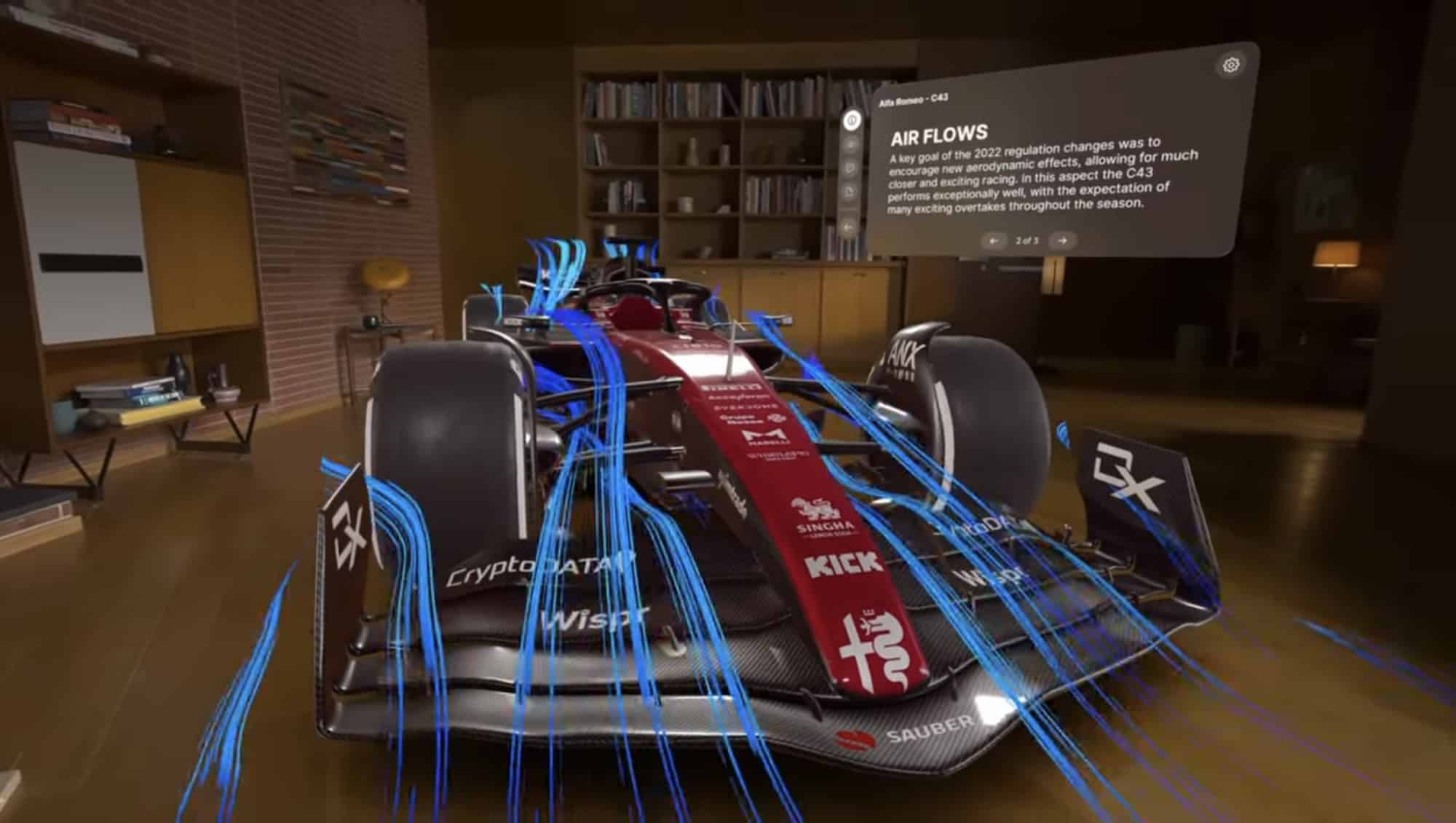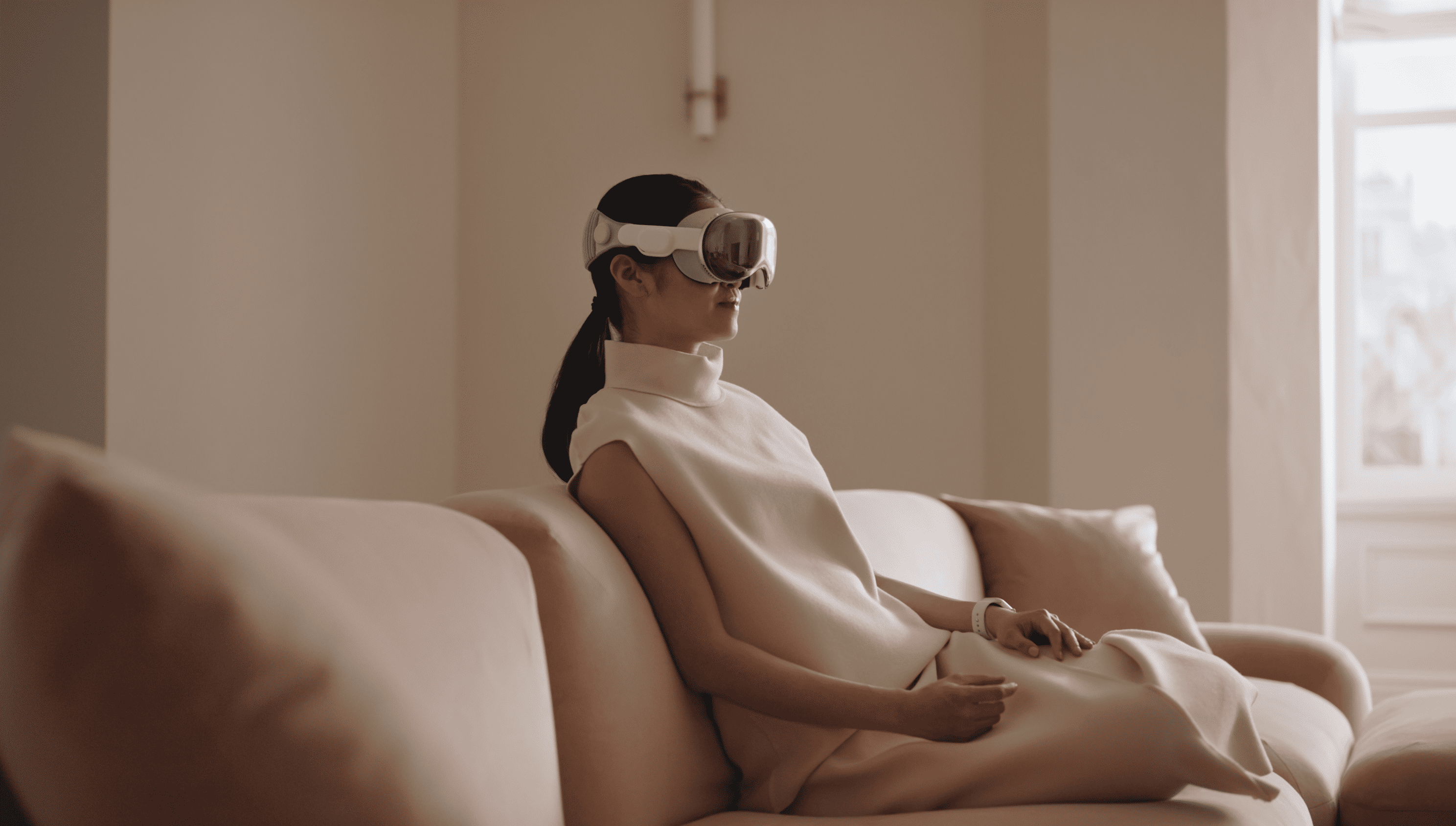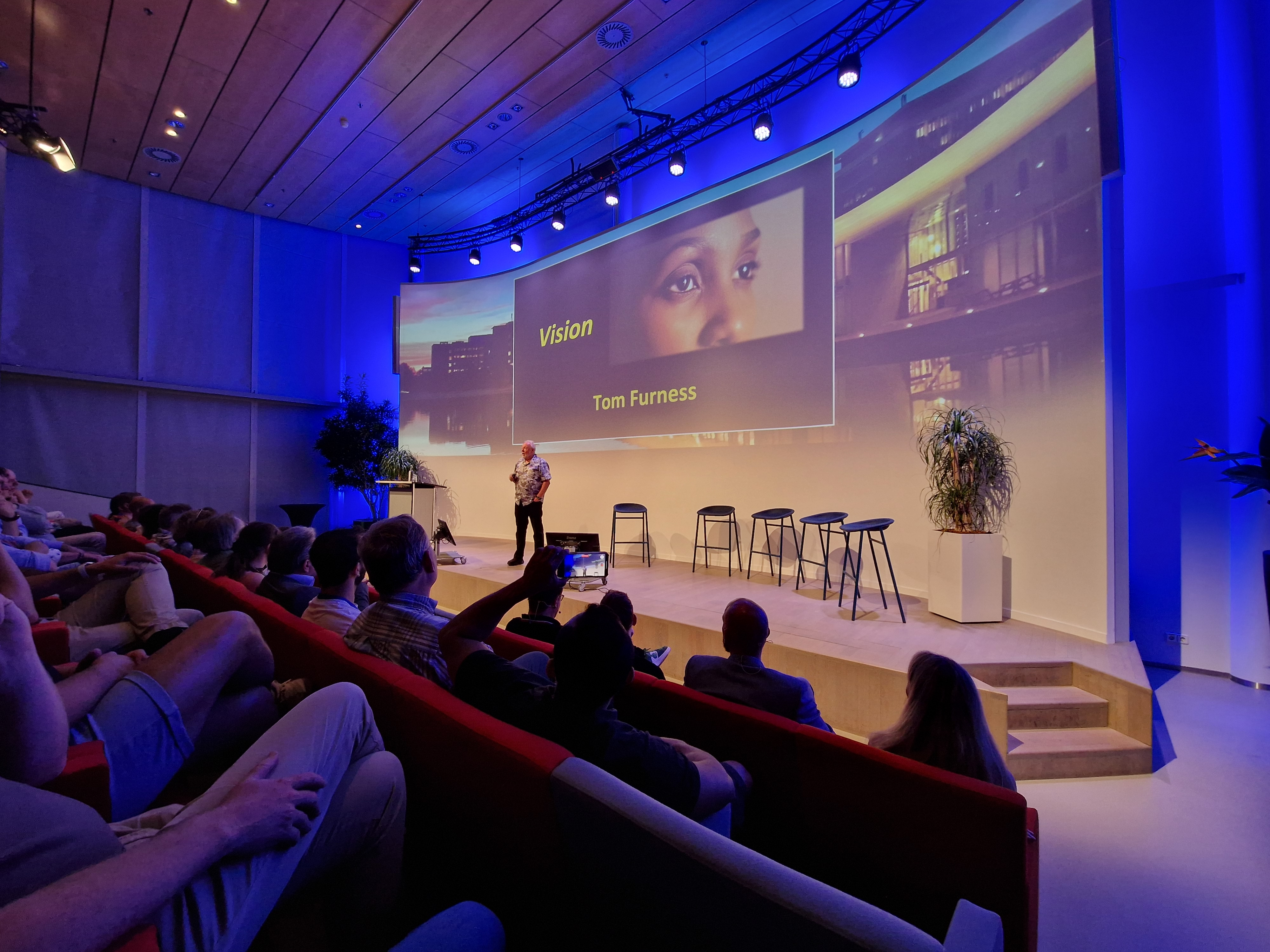
“As a society, we need a new kind of vision to survive,” states Tom Furness talking to the High Tech Campus Eindhoven’s (HTCE) conference center audience. Having devoted 57 years of his life to developing virtual reality (VR), he’s convinced this technology can give humankind a renewed vision to face the challenges of our times.
- VR’s impact on society can be huge;
- VR can provide with a new kind of vision to reimagine the world;
- HTCE to open a new living lab dedicated to the metaverse and web 3.0 applications;
Following Apple’s recent launch of its Vision Pro, the debate around VR and the spatial web became trending topics again – following the relatively quiet months after the hype for Meta’s unveiling of the metaverse. Although poised by many as the tool that will definitely kick off VR applications, “We had already invented these technologies thirty years ago,” said Furness. The spatial web, or Web 3.0, is a digital environment that blurs the line between physical and virtual with the increased use of VR and augmented reality (AR) technologies.
VR has always been there
Furness’s life and career revolve around virtuality, which “has always been there but has stayed inaccessible.” Being an electrical engineer by training, his first job was in the Air Force, where back in 1966, he started working on helmet-mounted displays for aircraft pilots. A jet’s dashboard contains tens of information, so the idea of creating these kinds of interfaces was to take these data streams and display them to the pilot in such a way that was more accessible.
The concept evolved in several iterations, with the 1986 Super Cockpit being a close precursor of the ‘new’ visors. VR’s pioneer joined the University of Washington three years later, starting the Human Interface Lab. There, he put his skill and knowledge of VR to work for a wider audience than the military one.
Societal impact
Through the activity at the lab, many VR applications came to life over the decades. The Magic Book, for instance, is an ordinary book that, if used with a handheld display, allows a seamless transition between physical, augmented, and virtual reality. The virtual retinal display is one of the most revolutionary creations of Furness, which granted him the Discover Award in 1998. It creates a panoramic, high-resolution, color virtual image projected directly onto the eye’s retina.
At 80, Furness still teaches at the university, and VR is still a big part of his life. With his Virtual World Society, he keeps inspiring humanity to thrive and create a positive impact using modern technology. VR potential is vast, especially for fields like education, as this technology offers an “unparalleled learning experience”.

VR’s potential and influence
In a following panel discussion moderated by Andy Lurling, founding partner at Lumo Labs – a venture capital fund – possibilities and challenges of the spatial web were discussed. Pere Perez Ninou and Katie Ireland – respectively, CEO of Metacampus and Enliven‘s co-founder – stressed the openness of the spatial web. In fact, the spatial web allows creativity for all.
In Serendipity’s managing partner Jonas Onland’s opinion, web 3.0 allows society to “face challenges such as climate change and organize society differently.” Thijs Verhulst, business development manager at Warner Music, highlighted how “interactivity and experience are different and change the engagement with artists.”
Furthermore, the panelists discussed the impact of such a technology, too. A mindset change is needed, as physical and virtual increasingly intertwine with each other. This would allow us to plan our cities more consciously and transform how people experience the world.
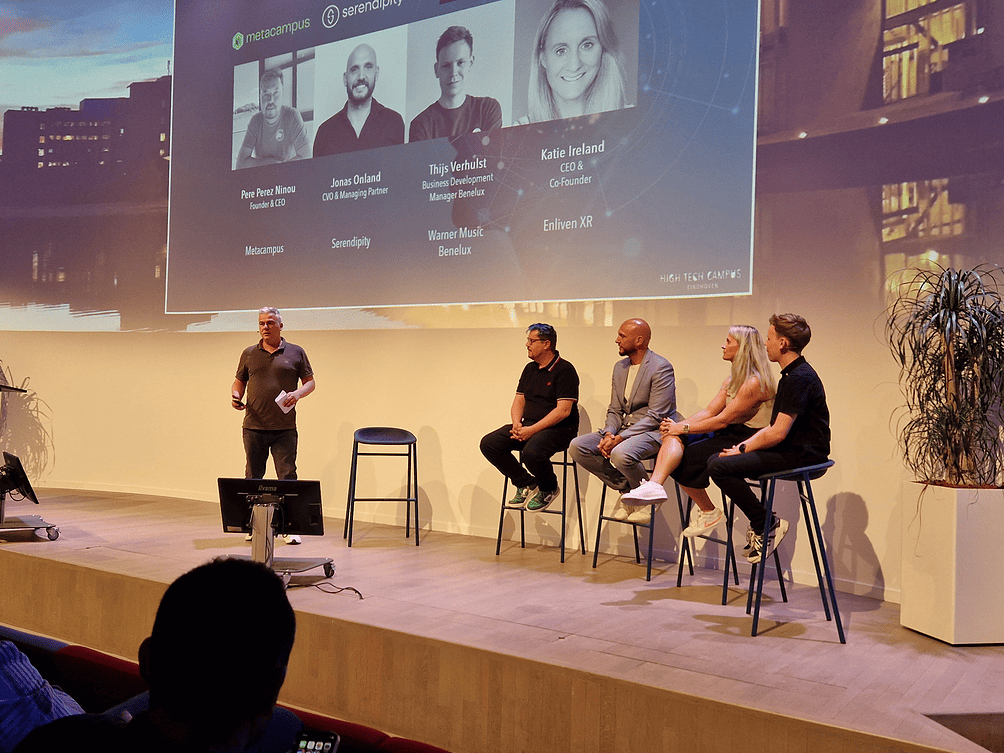
A new living lab
Moreover, the event was also a moment for the HTCE to announce the opening of its Innovation Hub centered on VR and spatial web. Philipp Werle, a business developer of emerging tech at the campus, took on the stage to introduce the initiative.
Like previous initiatives such as the AI Innovation Center or the Urban Air Mobility Hub, the campus will have a new hotspot for virtual reality, metaverse, and spatial web applications. Werle defined it as a “living lab” with space for knowledge sharing, training opportunities, and validation labs. Additionally, it will be a space for resident companies to showcase their technologies. The innovation hub will be opened by the end of the year.

The place to meet
If humankind needs a new vision to survive, new spaces to accommodate change are also welcome. “We need a place for minds to meet, and the spatial web is the place to do so,” concluded Furness.


